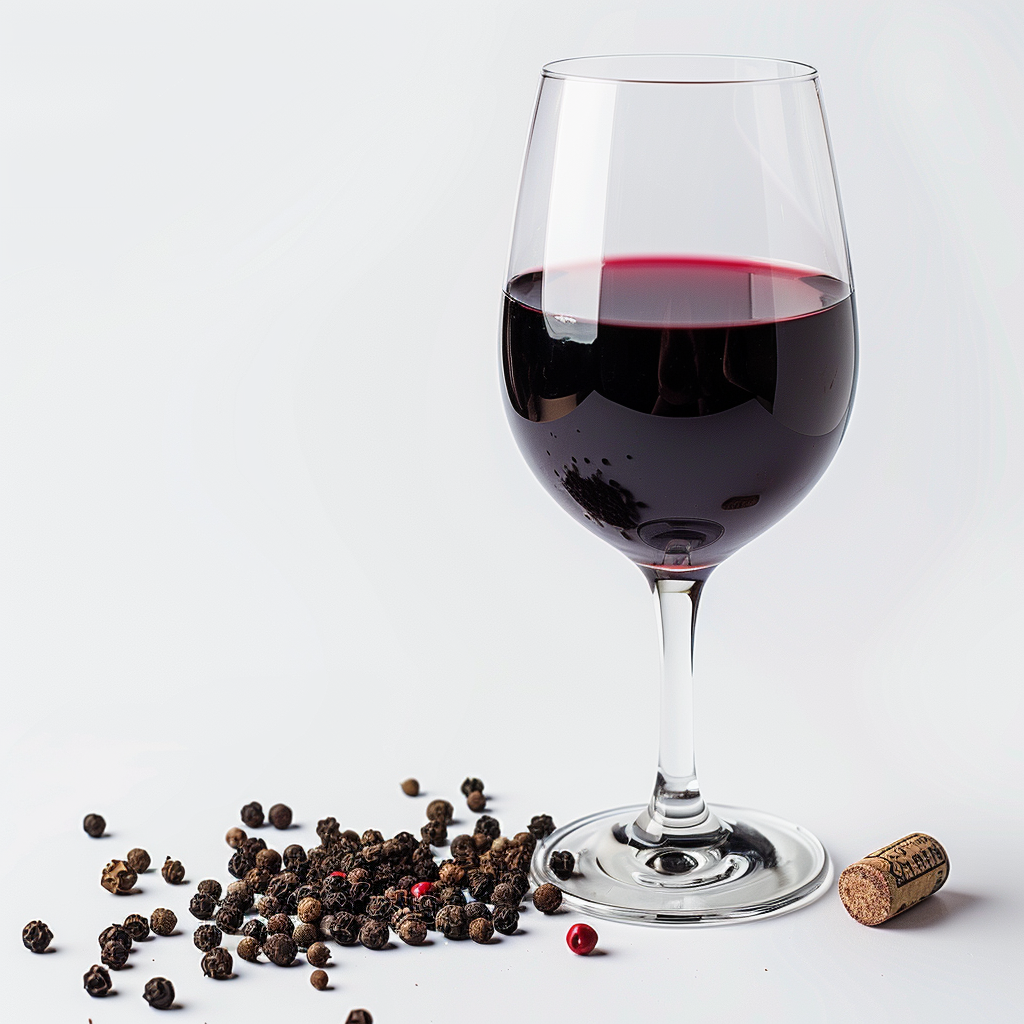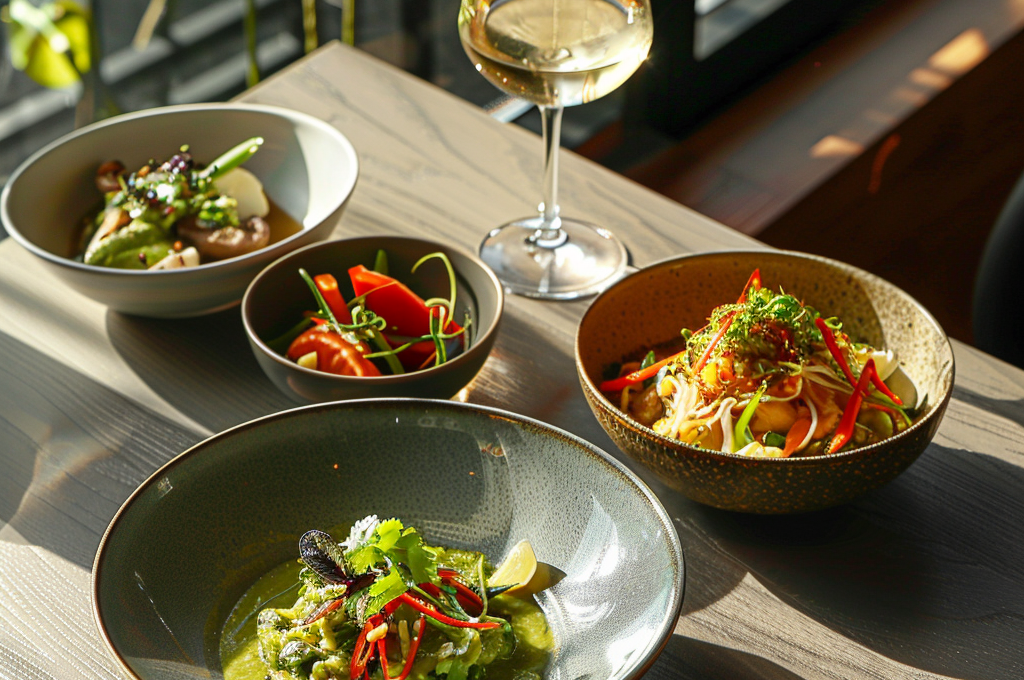Sipping on Spice: Exploring the Spicy Side of Wine
With August already ushering in temptations laden with pumpkin, cinnamon, ginger, clove, nutmeg and other fall flavor favorites, it’s the perfect time to explore spiciness in wine–a multifaceted characteristic adding depth and excitement to the vinicultural experience. Whether it’s the peppery punch of a Syrah or the warm and gingery notes of a Gewürztraminer, spicy wines elevate the complexity of wine and enhance the overall tasting experience.
Below VinoVoss.com Wine Expert Sylvia Ba (bio below) offers insights on the intriguingly spicy side of wine. I
Sipping on Spice: Savoring the Spicy Side of Wine

Earthy, mineral, spicy … these terms are commonly used to describe wine. The spiciness in wine is like the spiciness in food, it is not a flavor, but a sensation. Spiciness in wine is one of those intriguing characteristics that can elevate a wine and add complexity to it. It’s a sensation that parallels the heat from a chili pepper or the warmth from a touch of cinnamon. But what exactly makes a wine spicy? How can we identify it, and more importantly, how can we enjoy a spicy wine with food?
What is a Spicy Wine?
When we talk about spicy wine, we’re referring to wines that evoke a sensation of warmth and tingling on the palate, much like certain spices do. This spiciness can manifest in various forms.
For instance, a wine with a peppery character can remind one of the sharp bite of black pepper or the more subtle heat of white pepper. On the other hand, a wine that exudes baking spices flavors might reveal the sweetness and warmth of cinnamon or nutmeg, adding a familiar touch to its profile. Other wines might bring to mind the slightly sweet and woody heat of cloves or ginger, offering yet another layer of spiciness.
Certain wines are particularly known for their spicy profiles. Syrah, for example, is the most common spicy wine, known for its black pepper notes, especially in wines from regions like the Rhône Valley in France or the Barossa Valley in Australia. Meanwhile, Grüner Veltliner, the iconic Austrian white wine, displays a white pepper spiciness, setting it apart among white wines.
Gewürztraminer, with its exotic and aromatic profile, often carries a ginger-like spiciness, along with floral and lychee notes. In fact, “Gewürz” means “spicy” in German. On the other hand, Zinfandel, a robust and often fruity red, can express a range of spicy characteristics, from cinnamon to cloves, depending on the region and winemaking style.
Why Does My Wine Taste Spicy?

The spiciness in wine can be attributed to several factors, primarily the grape variety and the winemaking process. The inherent spiciness in certain wines often comes from the grape variety itself due to specific chemical compounds present in the grapes.
Rotundone is the primary aroma compound responsible for peppery notes in wine. Found in grape skins, rotundone is particularly prominent in varieties like Syrah and Grüner Veltliner, making the wines feel peppery and adding a layer of complexity to their flavor profiles. Similarly, 4-vinylguaiacol is known for contributing clove-like aromas and flavors. It’s more commonly found in wines made from grapes that have a higher phenolic content, influenced by the grape variety and growing conditions.
Beyond the grape variety, the winemaking and aging processes can also play a significant role in developing spiciness in wine. One of the key factors here is the use of oak barrels. When wine is aged in oak barrels, it can take on additional spicy characteristics. The type of oak, the level of toasting, and the length of aging all influence the final profile. American oak, for example, tends to impart more vanilla and coconut notes, while French oak can contribute subtle spices like clove and cedar. The interaction between the wine and the wood allows for the development of complex flavors that enhance the wine’s overall spiciness.
What Food to Pair with Spicy Wine?
When it comes to wine and food pairing, the key is to complement and balance the wine’s spicy notes with the right dishes. Just like light foods with crisp wines, sweet dishes with sweeter wines, one approach is to pair spicy wine with spicy food. Similar flavor profiles can create a harmonious match where the flavors complement each other.
For example, pairing Syrah with pepper-crusted meats can enhance the black pepper notes in the wine, creating a cohesive and robust flavor experience. Grüner Veltliner pairs wonderfully with spicy Asian cuisine, balancing the heat of dishes like Thai green curry or Sichuan cuisine with its fresh acidity and white pepper spiciness. Gewürztraminer can be a great match for dishes that have a touch of sweetness and mild spice, such as Indian curry. The ginger-like spice in the wine enhances the overall richness of the dish. Similarly, Zinfandel pairs well with hearty, smoky dishes like barbecue ribs, where the clove and pepper notes in the wine complement the smoky, tangy flavors of the ribs.

In addition to the dishes with similar taste profiles, it’s helpful to think about broader categories of foods that pair well with spicy wines. Meats, particularly those with rich, robust flavors, often match well with spicy reds like Syrah or Zinfandel. The spiciness in the wine can stand up to the bold flavors of the meat.
For white wines with spicy notes, like Grüner Veltliner or Gewürztraminer, consider lighter fare that still offers complex flavors. Asian and Mexican cuisine, with its intricate balance of sweet, sour, salty, and spicy elements, can be an excellent match, as can dishes with a touch of sweetness or mild spice, which help to highlight the spicy characteristics of the wine.
Spiciness in wine is a multifaceted and enchanting characteristic that adds depth and excitement to the wine. Whether it’s the peppery punch of a Syrah or the warm, gingery notes of a Gewürztraminer, spicy wines offer more complexity to the wine and pleasure to the overall tasting experience.
Wine consultant Sylvia Ba is a vinicultural expert with the “VinoVoss” AI Sommelier wine search engine and recommendation system developed by BetterAI.

Sylvia Ba
The user-friendly online platform picks the perfect wine every time, for any occasion courtesy of a highly advanced artificial intelligence assist.
With a master’s degree in wine business from Burgundy School of Business, as well as diverse background and experiences in Europe and Asia, she currently offers expertise in marketing, research, purchasing, and copywriting for clients in the wine industry all over the world. Sylvia’s experience includes working as a junior editor for a leading Chinese wine media outlet and as a fine wine salesperson for ASC Fine Wines, the largest fine wine importer in China. She also served as Export Manager for Vinum Hadrianum, an artisanal winery in Abruzzo, Italy.
Reach her at www.vinovoss.com

